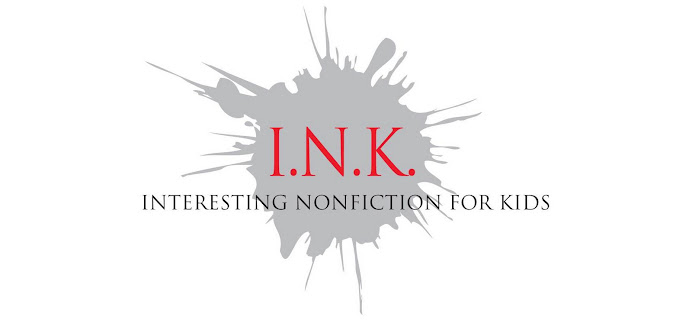No, this is not some type of plant that produces ink. This is
the last of the INK Recommends lists, focused on STEM: Science, Technology,
Engineering and Math. Because we have previously compiled lists that focused on
math and science, I have tilted this list toward the technology and engineering
side of things.
This list is also a bit different from other STEM lists you
might find in two ways: While animals
show up on this list, they do not dominate it the way they do many science
lists (unless they have something to teach us about engineering). And while there are some hands-on activities found in some of these books,
many are what I would call storytelling STEM in the sense that they delve deeply
into a STEM topic by telling gripping stories of people who have done something
compelling in a STEM field. The books on
this list that don’t take this approach have found other clever ways to bring
science, technology, engineering and math to life.
Happy reading. Thanks for reading. Linda, thanks for everything.
Elizabeth Rusch
PreK-5 STEM
Animals in Flight
by Steve Jenkins
Dreaming Up: A
Celebration of Building by Christy Hale
The Boy Who Loved
Math: The Improbable Life of Paul Erdos
by Deborah Heiligman
Building our House by
Jonathan Bean
Energy Island: How One
Community Harnessed the Wind and Changed Their World by Allan Drummond
Electrical Wizard: How
Nikola Tesla Lit Up the World by Elizabeth Rusch
Lifetime: The Amazing
Numbers in Animal Lives by Lola Schaefer
Marvelous Mattie: How Margaret E. Knight
Became an Inventor by Emily
Arnold McCully
Rosie Revere, Engineer
by Andrea Beaty
Snowflake Bentley
by Jacqueline Briggs Martin
Things that Float and
Things that Don’t by David Adler
Toilet: How It Works
by David Macaulay with Sheila Keenan
The Shocking Truth
about Energy by Loreen Leedy
Middle Grade STEM
A Black Hole is NOT a
Hole by Carolyn DeCristofano
Birds: Nature’s
Magnificent Flying Machines by Caroline Arnold
Earth-Friendly
Buildings, Bridges and More: The Eco-Journal of Corry Lapont by Etta Kaner
How Do You Burp in
Space? And Other Tips Every Space Tourist Needs to Know by Susan E. Goodman
The Mighty Mars
Rovers: The incredible adventures of Spirit and Opportunity by Elizabeth
Rusch
Team Moon: How 400,000 People Landed Apollo 11 on the
Moon by Catherine Thimmesh
Technology by
Clive Gifford
Try This! by Karen Romano Young
Wheels of Change: How
Women Rode the Bicycle to Freedom (with a few flat tires along the way) by
Sue Macy
Young Adult STEM
Almost Astronauts: 13
Women Who Dared to Dream by Tanya Lee Stone
Bomb: The Race to
Build – and Steal – the World’s Most Dangerous Weapon by Steve Sheinkin
The Boy who Harnessed
the Wind by William Kamkwamba and Bryan Mealer (also available in a young
readers edition)
The Boy who Invented
TV: The Story of Philo Farnsworth by Kathleen Krull
Junkyard Science by Karen Romano Young
The Longitude Prize
by Joan Dash
Something out of
Nothing: Marie Curie and Radium
by Carla Killough McClafferty
Steve Jobs: The Man
who Thought Different by Karen
Blumenthal
The New Way Things
Work by David Macaulay and Neil Ardley
Women of Steel and
Stone: 22 Inspirational Architects, Engineers, and Landscape Designers by
Anna M. Lewis
Not enough STEM titles here for you? Check out Bank Street College
of Education’s STEM list at:
Or the annual lists of Outstanding Science Trade Books for
Students K-12 put together by the National Science Teachers Association and the
Children’s Book Council:




.jpg)


